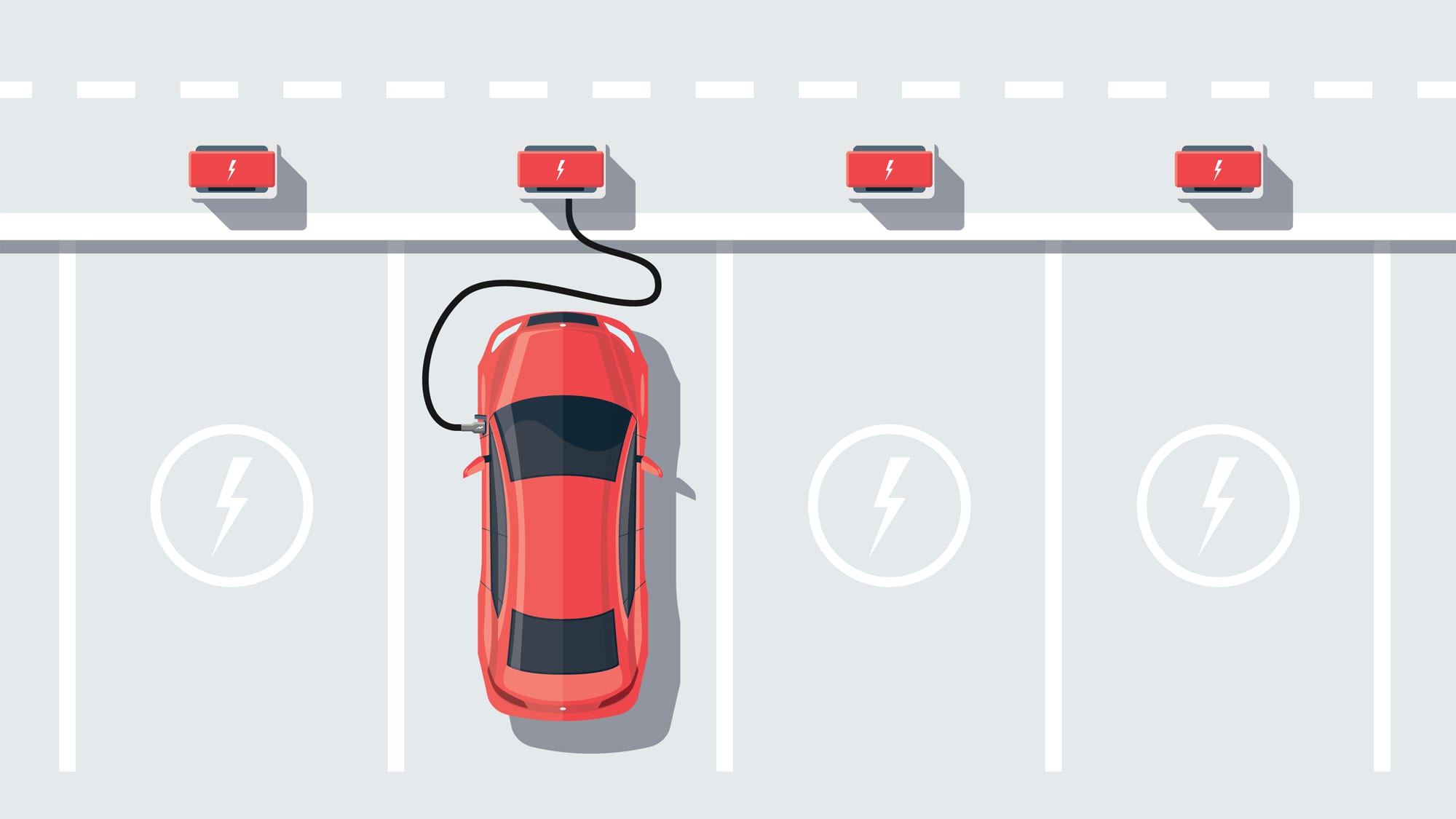Rosario Fortugno will never forget his first ride in an electric car.
It was 2015 and the AMA member and electrical engineer was in Palo Alto, California to test drive a Tesla Model S, the four-door family sedan that was gaining a following for its ability to go from zero to 100 km/h in a sizzling three seconds. Fortugno knew that the Tesla was powerful, but when he accelerated for the first time, he was impressed. “It sucks you back into the seat,” he says. “It was the fastest I’d ever accelerated in a car. I was hooked.”
A few months later, he launched InOrbis, an Alberta-based intercity ride-sharing service that uses only Teslas. “Environmental friendliness was a huge factor,” he says of his decision to go with the vehicles. “But overall, it’s a better car than any other car that I’ve ever driven.”
Fortugno is one of a growing number of Albertans who have embraced electrified transportation. According to Alberta Transportation, there were more than 3,500 electric vehicle registrations in the province in 2021. As of March 2021, there were more than 3,500 electric vehicles registered in the province—a nearly 10-fold increase since 2017. Hybrid vehicles are also gaining traction, with registrations climbing 30 percent—to 21,459—during that same period, according to Alberta Transportation.
Admittedly, those numbers are still small. In 2021, there were more than 3.6 million motor vehicles registered in the province. But converts think Alberta is nearing an electric car tipping point. They believe falling prices, technological advancements and an expanding network of charging stations have, finally, made it possible for the average person to try an alternative to the internal combustion engine. AMA Insurance helps make it more affordable too, by offering a rate discount to owners of electric and hybrid vehicles.
“For many, electric vehicles are the future,” says William York, the head of the EVAA.
MORE TO READ
What you need to know about autonomous vehicles and the future of driving
That may be so, but the technology is almost 200 years old. The first crude electric car was built in 1832; by the turn of the 20th century, they comprised a third of vehicles on American roads, according to the United States Department of Energy. But the advent of cheap, mass-produced gas cars, like Ford’s Model T, largely spelled the end of those “first gen” electrics.
Things began to change, however, in 2010, when Nissan unveiled the Leaf, the world’s first mass-market electric vehicle. Scores of carmakers, under pressure to reduce emissions, soon followed suit with their own battery-powered cars. While eco-friendly, many of those early models were dogged by short ranges, middling performance and questionable styling. (Car and Driver magazine called the 2011 Leaf “embarrassing.”)
Today’s electric cars are different animals. Their looks are mainstream. They can travel upwards of 600 km on a charge. And thanks to the instant power provided by electric motors, they can be fast. The Chevrolet Bolt boasts 200 horsepower and revs up to 97 km/h in 6.3 seconds.

“People think electric cars are going to be sluggish. They’re not,” says Keith Allan, sales manager at Edmonton’s Westgate Chevrolet, which sells the all-electric Bolt. “They’re every bit as powerful as cars with gas motors.”
They’re also getting easier to charge away from home, eliminating the range anxiety that haunted many early adopters. According to the federal government, there are now more than 5,000 public electric car charging stations across Canada, including 208 in Alberta. Forty-three of those are so-called fast chargers, which can top up a battery in under an hour. Many are part of the new Peaks to Prairies network. Run by ATCO and financed in part by municipalities, the network stretches from Canmore to Medicine Hat.
“Travelling in southern Alberta and across southern B.C., there is really good infrastructure right now and it’s going to keep getting better,” says Eric MacNaughton, a transport engineer with the City of Calgary. Waning range anxiety isn’t only unique to southern Alberta. A recent study by the American Automobile Association (AAA) found the vast majority of electric car owners it surveyed no longer worry about finding charging stations or running out of power.
Zero-emission vehicles only accounted for 3.5 percent of national car sales in the third quarter of 2019, according to advocacy group Electric Mobility Canada. But industry experts say there’s no stopping the eventual decline of the internal combustion engine. The world’s biggest automakers have announced investments totaling $300 billion in new electric models. And governments have stepped in to make purchasing an EV more affordable: Buyers may be eligible for a point-of-sale incentive of up to $5,000 from the federal government, while the City of Edmonton offers a rebate of up to $600 when you install a level 2 charging station in your home. Thanks to efforts to lower prices and provide greater choice, the research arm of Bloomberg media predicts electric cars will outsell their gas counterparts by 2038.
Whether that holds true in oil-and-gas country remains to be seen. But for the EVAA’s William York, one thing is undeniable. Electric cars are “fun and cheap to drive”—no matter where you are or where you’re going.
THE BIG QUESTIONS BEHIND ELECTRIC VEHICLES
How do electric cars work?
The answer is a little complex. There are currently three main types of electric cars. Battery electric vehicles are the archetypal option. Pioneered by the likes of Tesla, these cars run entirely on electricity and must be plugged in to charge. One rung down the electric ladder are plug-in hybrids. They have both an electric motor and an internal combustion engine. A small battery pack allows for some all-electric driving (usually under 100 kilometres) and once it’s spent, the internal combustion engine kicks in. Finally, there are hybrid electric vehicles, like the original Toyota Prius. They have an electric motor and a gas engine—but unlike plug-in hybrids, they cannot be charged from the grid.
MORE TO READ
The lowdown on Advanced Driver Assistance Systems and crash-avoidance technology
Why buy an electric car?
Battery electric vehicles don’t emit planet-warming greenhouse gases. (That said, since you’ll likely charge them from the electrical grid, their overall carbon footprint depends on how your province generates power; in Alberta, more than 90 percent of it comes from coal and natural gas.) They’re also much less expensive to fuel than gas-burning cars. And because they have fewer moving parts, electric motors are cheaper to maintain. The 2° Institute, a British Columbia think tank, estimates that car owners in Alberta could save more than $3,300 annually on fuel and upkeep by going electric.
What are the drawbacks?
New battery-electric vehicles are expensive to purchase; some cost twice as much as similar gas-powered cars. Likewise, many can’t travel as far on a single charge as a gas car can on a tank of fuel, though the gap is closing: Most entry-level EVs can now travel at least 350 kilometres per charge and high-end Teslas can cover around 630 kilometres. According to a 2019 AAA study, however, cold temperatures can tax an EV’s battery, potentially chopping its range by 40 percent. And there are lingering environmental concerns about how heavy-metal laden batteries will be recycled or disposed of, particularly as EV use grows. Finally, for now, choice is limited. Most electric vehicles are sedans and compact crossovers.

HOW AND WHERE TO CHARGE YOUR ELECTRIC CAR
EVs are charged just like any other electronic device: with a power cable plugged into an outlet. But electric cars charge at three different speeds.
Level 1: Plug into a regular three-pronged outlet. But at just 110 or 120 volts, the charge will be glacial—think days for cars with bigger batteries.
Level 2: A 240-volt power supply (the kind used for ovens and clothes dryers) that’ll replenish an empty EV battery overnight.
Level 3: Often called DC fast charging, this commercial-grade charger is more rare and isn’t compatible with all vehicles. The 480-volt charger can power up an electric car in less than an hour.
Alberta has more than 200 public charging stations with more being added throughout the province. Across the Prairies, there are nearly 300, while B.C. and Ontario boast nearly 900 and 1,300 respectively. Find stations on the website of Natural Resources Canada, your in-car navigation system or smartphone apps like PlugShare. (Due to COVID-19, some fuelling stations may be closed or restricted.)
SAVE WITH AMA
AMA Insurance believes in protecting what matters most, including the environment, and that’s why they offer a premium discount to owners of electric and hybrid vehicles.
